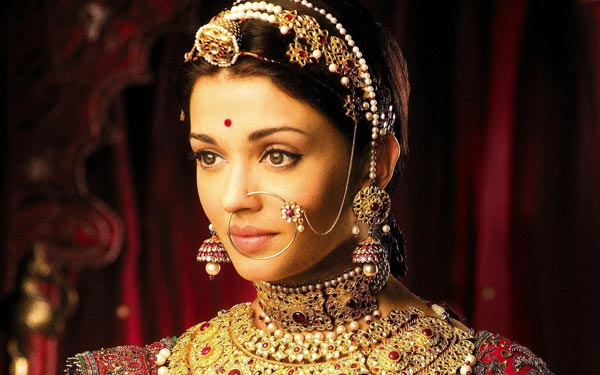Decipher the mysterious red dot on the Indian woman's forehead
If you've ever seen photos of Indian women, you'll see a familiar identification feature: the last red dot on their forehead. Have you ever wondered about the meaning of this red dot? Let's find out what its true effect is!
What effect does the red dot on the Indian women 'forehead have?
Some Indian women carry a small dot between the eyebrows. That small dot is called bindi , and it is derived from an ancient custom of Hinduism. Bindi symbolizes the power of women and it is believed that it will protect women and their husbands. Along with the development of modern medicine, bindi red dots can also save lives.
According to Indian conception, the area between the two eyebrows is called the place where all human intellect is concentrated. Indian women put red or gemstones here to be knowledgeable and lucid and also stay away from demons. Many also claim that the bindi is like the third eye of an Indian.
The red color of the bindi symbolizes honor, love and prosperity. In southern India, usually married women then put a bindi on their foreheads so that men know that they are the ones who have peace of mind.

"Red dots save lives" for thousands of women in India
However, bindi red dots may also work to save lives.
The reason is that in the area where they live, plants grow on iodine-deficient plots and about one-third of households cannot access other sources of iodized salt. Some are struggling with breast cancer, mammary cysts and complications during pregnancy. Most of these cases are a consequence of iodine deficiency.
How do we ensure that women in rural areas absorb enough of the necessary iodine? Most Indian women wear a bindi, a small dot decorated in front of the forehead.
Based on this fact, Gray for Good , a newly established charitable branch of Singapore's Gray Group, has joined the Neelvasant Medical Foundation and Research Center (Neelvasant Medical Foundation and Research Center) - a NGOs in India. They have produced bindi packages , called 'Life Saving Dot'.
Iodine deficiency is the leading cause of brain damage in the world. You may not have heard much about iodine minerals, but it plays an extremely important role for the human body. In pregnant women, iodine deficiency can lead to fetal malformations or stillbirths.

The back of each network save, or Jeevan Bindi, is coated with iodine, turning it into a small iodine pack.
The Neelvasant Indian Research and Medical Center coated the back of the bindi with iodine and this red dot will provide up to 150 micrograms of absorbed iodine through the skin. The problem with using supplements is that the price is very high and most households are not eligible to pay. But with red dots saving lives, the price is quite cheap at 10 rupees, or 16 cents for 30 days of use.
According to the International Business Times, the group is still conducting research to determine the degree of bindi effectiveness in providing iodine into the bloodstream. It is equally important to determine if iodine can remain in the bindi in dry, hot weather conditions. So far, iodine-coated bindi has reached more than 30,000 women in 100 villages.
Hopefully, this idea will work as expected. This is a great start to the goal of helping people with iodine deficiency.

The red color of the bindi symbolizes honor, love and prosperity.
Today, the use of bindi has changed a lot compared to the traditional way. Many women and even bindi Indian men to beautify, do not limit the age, status, gender. Bindi now has a decorative meaning and has no color limit. Girls can buy bindi stickers or gemstones on their foreheads as a jewelry.
Bindi is no longer limited to India but has spread to many other Asian countries. The image of a woman with a red dot on her forehead also inspired the makeup style of many young American and European girls.
- 'Single-label' goat monsters are worshiped by Indian villagers
- How to recognize brain circulation disabilities
- Decipher the mysterious 5,500 puzzle
- Decipher the mystery of
- The toxin in litchi kills more than 100 Indian children each year
- Decipher the mysterious noises from the ground
- Decipher the mysterious shapes in the Amazon forest
- The scary story about the Indian horns of the Indians
- Decipher the mysterious language of dolphins
- Discover the mysterious creature in the deepest area of the Indian Ocean
- Decipher the mysterious halo before the earthquake
- Guess the disease through the location of acne on the face
 'Fine laughs' - Scary and painful torture in ancient times
'Fine laughs' - Scary and painful torture in ancient times The sequence of numbers 142857 of the Egyptian pyramids is known as the strangest number in the world - Why?
The sequence of numbers 142857 of the Egyptian pyramids is known as the strangest number in the world - Why? History of the iron
History of the iron What is alum?
What is alum?